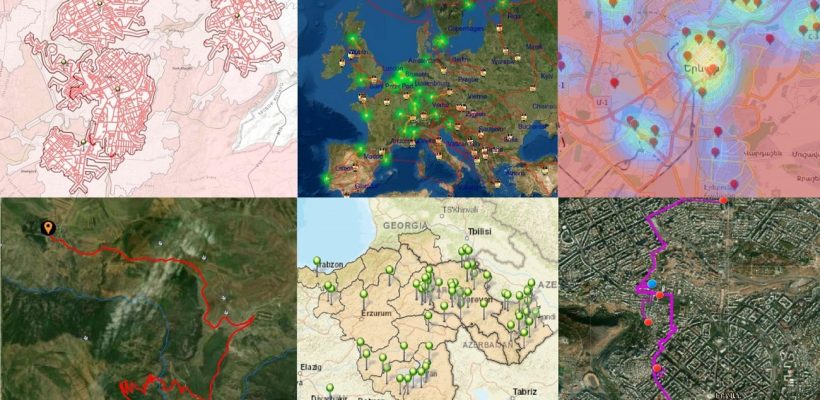
GIS Story Maps Created by AUA Students
3 min readYEREVAN, Armenia — The American University of Armenia (AUA) is happy to share web-based Geographic Information Systems (GIS) story maps created by AUA students of CSE 145: GIS course in the Fall 2020 semester. Using ArcGIS StoryMaps, a dynamic storytelling platform, the students designed interactive maps with an integrated narrative that illustrates spatial relationships and brings stories to life.
Seven Wonders: Natural World is a GIS story map designed by Nare Baghdasaryan (BAEC ‘24). The project depicts the seven wonders that were created by nature: auroras, the Great Barrier Reef, Mount Everest, Victoria Falls, Grand Canyon, Parícutin Volcano, and Sugarloaf Mountain. Baghdasaryan says that many people are more interested in the seven man-made wonders than those born in nature. So, she decided to present the uniqueness of this topic with her wondrous story map.
The driving time to the nearest shopping mall was estimated by Susanna Ktikyan (BAB ‘24) to help people who like going shopping. Her GIS map displays outlined areas within which it will take one less than five minutes to reach a shopping mall, as well as rush hour traffic on Saturday evenings. Ktikyan notes that the reason she chose this topic is the high demand for malls in Yerevan: “It is a fast and easy way to be aware of the exact time it takes to reach a specific mall.”
(Green) Capitals of Europe, designed by Narek Otaryan (BSCS ‘24), may serve as a guide for those people who are interested in traveling around Europe. Stockholm, Hamburg, Vitoria-Gasteiz, Nantes, Copenhagen, Bristol, Essen, Oslo, Lisbon, Lahti, Lyubijana, Nijmegen, and Grenoble are the Green Capitals of Europe he has included in his project. The story map shows the distance from a European capital to the nearest two Green Capitals.
To create the Cultural Schools in Yerevan, Armenia story map, Arpi Sargsyan (BAB ‘23) interviewed a group of parents living in different areas of the city, who do not let their children receive an education that will enhance their creativity. Among the factors parents have considered in reaching that decision are the tuition fee; the level of quality; and, most importantly, the distance between their homes and those schools that provide cultural education.
Hiking Trails of Syunik story map is created by Inesa Sargsyan (BAEC ‘24), a passionate hiker, who wants to attract tourists with her project. As she remarks, “Attracting larger numbers of tourists to Armenia for camping and hiking is highly essential for our country and its economy.” Being familiar with the hiking trails in Syunik Sargsyan has drawn all the trails herself using her own knowledge and experience in this field.
Inesa Toroyan’s (BSDS ‘24) project, Welcome to Historical Armenia, presents the ancient churches, other Armenian historical sights, and information about the 12 historical capitals of Armenia. For her, preserving and spreading information about the history and culture of Armenia is essential: “My main motivation for this topic was the war, which started on September 27th. Sadly, now we witness vandalism of historical sights of Artsakh. I think that gathering such information about our historical treasures on one map is an important approach to preserving our cultural identity.”
A map of the gyms and swimming pools near AUA was created by Areg Hovakimyan (BAB ‘22) who wants to help AUA students to find nearby locations for their physical education course. With this story map, AUA students can see the exact distance and time it takes to walk from AUA to one of the nearest gyms or swimming pools in the vicinity.
Founded in 1991, the American University of Armenia (AUA) is a private, independent university located in Yerevan, Armenia, affiliated with the University of California, and accredited by the WASC Senior College and University Commission in the United States. AUA provides local and international students with Western-style education through top-quality undergraduate, graduate, and certificate programs, promotes research and innovation, encourages civic engagement and community service, and fosters democratic values.
